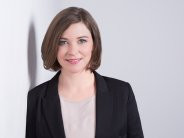Socio-economy & New Tech
Culture, Heritage & Community Conservation
Cultural Heritage Preservation
Post-Doctoral Fellowships
Germany
2015.12.31
Genuine Artifacts, or Forgeries Good as Gold?
Gold, the most timeless of precious metals, has actually evolved through the ages. Modern gold objects differ in craftsmanship and even composition from the gold worked by the Ancients. And it’s a good thing, too: Dr. Verena Leusch relies on this fact to carry out her chemical detective work, to the benefit of both today’s art world and archeologists studying the past. Her research contributes to the authentication of artifacts, a crucial service for museums, historians and society’s understanding of the past. Because, as she puts it, “All that glitters is not antique gold.”
Knowledge of ancient cultures contributes to our ability to date artifacts. For example, natural gold is actually a mixture of gold, silver and copper, and it is thought that people learned to refine their gold starting in the 6th century BC. When an excavation reveals a find that appears to be well older, yet is made of particularly pure gold, archeologists must question their assumptions about the skills of past civilizations—or the authenticity of the find. By analyzing a panel of artifacts from museum collections, like coins and ornaments, Dr. Leusch will address whether high purity gold can be used as a marker of forgery. Her work is unique for the number and variety of objects she will study: around 200 known authentic artifacts from across Europe and the Middle East, spanning the millennium up to 500 BC.
Because gold does not corrode, an artifact’s composition can be measured directly on its surface. Dr. Leusch will use a quick, precise technique called x-ray fluorescence analysis to obtain this information that speaks to the purity of the gold used in different places at different times. She will next look at the trace elements present in the gold, like platinum or tin. These are simply relics of the original geological source or the production process, like a “workshop fingerprint”. The profiles of these elements are significantly different between original antiques and forgeries, she says.
By going beyond isolated analyses of single objects, she will be able to take a broad view on ancient gold processing, providing necessary insight for the authentication of potentially high-value pieces of cultural history. The issue is of significant concern for museums and their funders, since costly showcases and facilities are created to display artifacts believed to be genuine. Telling forgeries from originals is essential for the insurers who provide coverage for the items of our collective heritage. On top of that, an important side effect of her work, Dr. Leusch explains, is that such conclusions affect everyone’s understanding of the past.
Knowledge of ancient cultures contributes to our ability to date artifacts. For example, natural gold is actually a mixture of gold, silver and copper, and it is thought that people learned to refine their gold starting in the 6th century BC. When an excavation reveals a find that appears to be well older, yet is made of particularly pure gold, archeologists must question their assumptions about the skills of past civilizations—or the authenticity of the find. By analyzing a panel of artifacts from museum collections, like coins and ornaments, Dr. Leusch will address whether high purity gold can be used as a marker of forgery. Her work is unique for the number and variety of objects she will study: around 200 known authentic artifacts from across Europe and the Middle East, spanning the millennium up to 500 BC.
Because gold does not corrode, an artifact’s composition can be measured directly on its surface. Dr. Leusch will use a quick, precise technique called x-ray fluorescence analysis to obtain this information that speaks to the purity of the gold used in different places at different times. She will next look at the trace elements present in the gold, like platinum or tin. These are simply relics of the original geological source or the production process, like a “workshop fingerprint”. The profiles of these elements are significantly different between original antiques and forgeries, she says.
By going beyond isolated analyses of single objects, she will be able to take a broad view on ancient gold processing, providing necessary insight for the authentication of potentially high-value pieces of cultural history. The issue is of significant concern for museums and their funders, since costly showcases and facilities are created to display artifacts believed to be genuine. Telling forgeries from originals is essential for the insurers who provide coverage for the items of our collective heritage. On top of that, an important side effect of her work, Dr. Leusch explains, is that such conclusions affect everyone’s understanding of the past.
Scientific title: All That Glitters Is Not Antique Gold: Scientific Investigation On Ancient Gold And Modern Forgeries
To add or modify information on this page, please contact us at the following address: community.research@axa.com

Verena
LEUSCH
Institution
Reiss-Engelhorn-Museen
Country
Germany
Nationality
German
